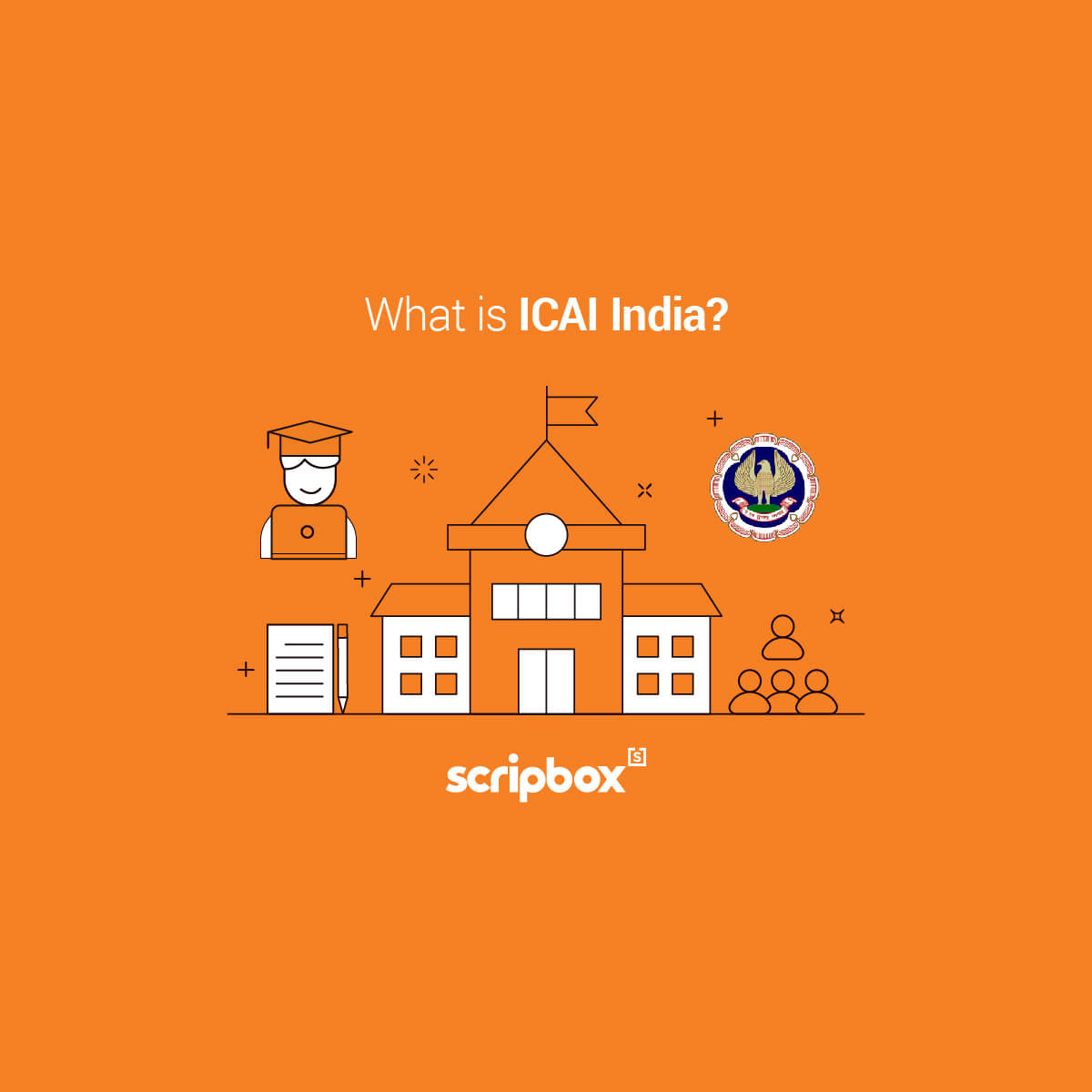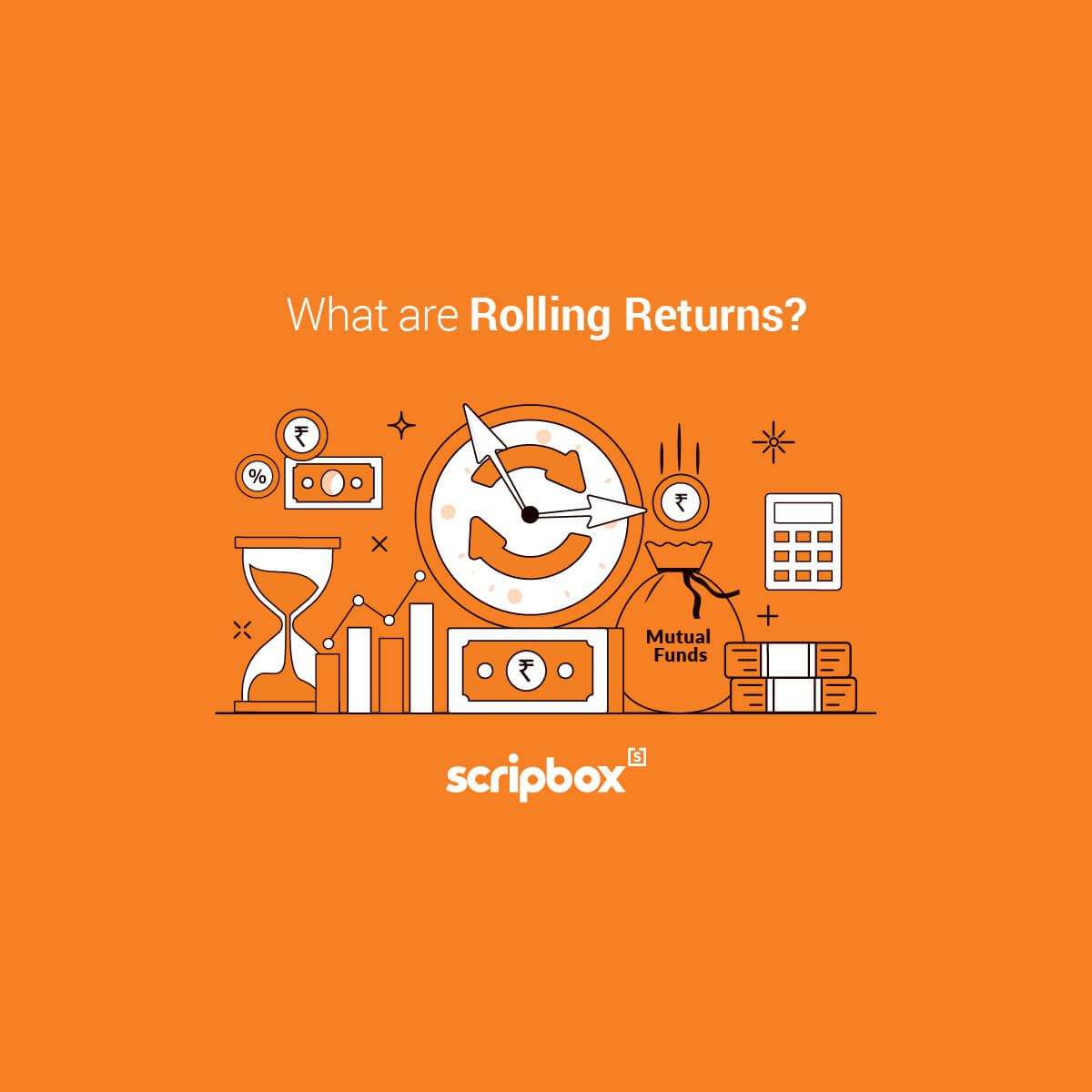ELSS funds are the best tax saving investment option. They fall under the diversified equity category as they invest 80% of their assets in equity and equity related instruments. These tax savings mutual funds qualify for tax exemption of INR 1.5 lakh under section 80C of the Income Tax Act, 1961.
What are ELSS Funds?
Equity Linked Saving Schemes (ELSS) are the best tax saving mutual funds. ELSS mutual funds fall under the diversified equity mutual funds category. This equity fund invests at least 80% of its assets in equity and equity-related instruments, part of the corpus is invested in debt as well. ELSS funds provide dual benefits for its investors of capital appreciation and tax saving. ELSS mutual funds come with a lock in period of three years. Investors are allowed to claim tax deductions under Section 80C of the Income Tax Act, 1961 up to Rs. 1.5 lakh in a financial year.
Who Should Invest in ELSS Funds?
Any individual or HUF who wants to save on taxes under section 80C can invest in ELSS mutual funds. ELSS mutual funds have a certain amount of risk attached to them. This is because of the equity exposure in the portfolio. Therefore, ELSS mutual funds are best suited for individuals who understand equity asset class risk. These tax saver funds offer higher returns when compared to other tax saving schemes. Investors should have a long term horizon for their ELSS investments. Among all the asset classes that qualify for tax deduction under Section 80C of the Income Tax Act, ELSS funds have the lowest lock in period.
ELSS funds offer portfolio diversification for its investors. These tax saver funds have dedicated and professional fund managers. Small investors, too, can save taxes by investing in ELSS mutual funds through SIPs. Historical returns of Best ELSS funds have been around 12% or even higher returns.
Advantages of ELSS Mutual Funds
1. Tax Benefit of ELSS Mutual Funds
Tax saving is the prime reason for ELSS being the great choice as an investment option. Investment to the extent of Rs. 1.5 Lakhs annually in ELSS qualifies for the tax deduction under section 80C of the Income Tax Act, 1961.
However, you can invest any amount in ELSS, as such there is no upper limit for investment. The investment beyond Rs. 1.5 Lakhs do not provide tax benefits.
You may also like to read – ELSS vs PPF
2. Lock-in Period
There is a lock-in period of 3 years associated with the ELSS investment. The lock-in period helps reinvestment of earnings and evens out the initial volatility associated with equity investments.
However, you should know that the lock-in period starts from the date of purchase. For example, if you are investing a lump sum amount of Rs. 1000 and getting 100 units on July 31, 2019. Then the lock-in period will get over on July 30, 2022.
But when you are investing through SIP every month like 10 units on July 31, 2019, 10 units on August 31, 2019, and so on. Then the lock-in period will end on – for the first 10 units on July 30, 2022, for the next 10 units on August 30, 2022, and so on.
3. SIP or Lumpsum
There are two methods to invest in ELSS. If you have regular income then you can invest monthly through SIP. Otherwise, if you have surplus cash then you can make a single lump-sum payment to invest in ELSS.
You can invest in ELSS through SIP for as small as Rs. 500 per month. You can check the difference between SIP and Mutual fund.
4. Major Investment in Equity
For generating returns, the ELSS pooled funds are invested in equity and equity-related securities. Equity instruments carry a higher level of risk than debt, bonds or money market instruments like CPs, CDs, and T-bills.
You should also check your risk appetite before investing in equity. Equity offers better returns over a period of time but can be volatile in the short term.
Likewise, you also get higher returns for investing in ELSS. ELSS gives you 12% and above returns in comparison to 8% returns of PPF and NSC.
Read more about the NSC vs ELSS
5. Tax on Returns
Not all gains from ELSS investments are tax-free. The gains from ELSS investments are treated as long term capital gains (LTCG) and any gains in excess of Rs. 1 Lakh is taxed at the rate of 10%.
6. High Returns
Top ELSS funds have the potential to earn higher returns than other tax saving instruments like PPF or NPS. These high returns are a result of the risk taken by the fund houses by investing in equities. Some best ELSS funds also invest in mid cap companies. These funds can generate higher returns than funds that invest only in large cap companies. However, the risk associated with such funds is higher when compared to other funds.
7. No Upper Limit
There is no maximum limit to the amount an investor can invest in ELSS funds.
8. Professional Management
Professional fund managers manage ELSS mutual funds. Therefore, an investor with little or no knowledge about the markets can invest in the best ELSS mutual funds and still get maximum returns. This professional management service helps investors get higher returns compared to other traditional tax saving options.
Options for Investing in the Best ELSS Funds
There are three types of ELSS mutual funds that an investor can choose from,
1. Growth Option
Under the growth option, the investor gets the gains only at the time of redemptions. Appreciation in the total NAV of the ELSS mutual fund multiplies the profits. Investors are not entitled to benefits in the form of dividends. Mutual fund returns are subject to market risks, and so are the returns from ELSS funds.
2. Dividend Option
Under the dividend option, the investor is entitled to get timely dividends. Dividends are declared only when there are excessive profits. According to the budget 2020, the dividends are taxed in the hands of the investors. The investors are supposed to pay the tax on dividends based on their income tax slab.
3. Dividend Reinvestment Option
Under this option, the investor can choose to reinvest dividends received into the same scheme. This option is favorable when the markets are doing well and are likely to continue in the same way.
Upon choosing the type of ELSS fund, the investor can invest either through a lump sum amount or SIPs. ELSS mutual funds are suitable for small investors as well, who wish to invest small and regular amounts to save tax. However, if an investor has a lump sum amount, they can also invest the entire amount in the top ELSS funds.
How to Choose ELSS Mutual Funds?
Evaluating a mutual fund before investing in one is very important. Not every investor is the same, and hence the same fund never suits two different investors. But there are specific rules of thumb that all investors can follow to evaluate mutual funds before investing in them. Below are a few pointers an investor can use.
1. Performance of the fund
The performance of the fund is the first thing any investor checks. While checking the performance of the fund, the current performance and the past performance has to be checked. Its consistency also has to be checked. Investors also have to compare the fund’s performance with that of the benchmark. The more consistent a fund’s performance is, the better the fund is.
2. Fund History
Investors have to check the fund house, its governance, and the number of years of experience it has. The older the fund house and the more experience the fund manager has, the better they will be at handling the fund’s portfolio in all situations.
3. Expense ratio
The expense ratio is the cost an investor incurs for investing in mutual funds. It is calculated as a percentage of the NAV. Hence investors have to make sure the fund has a lower expense ratio. Lower the expense ratio, the higher will be the returns.
4. Taxation
The taxation rules of the fund upon maturity is important. Investors have to understand the tax implications of redeeming their investment in the short and long term.
5. Sharpe Ratio
Sharpe ratio evaluated the return of the fund against the risk. Hence higher the ratio, the better is the fund. The formula is Sharpe ratio = (Average portfolio return − Risk-free rate)/Standard deviation of the portfolio.
6. Standard Deviation
Standard deviation of the fund shows the volatility in a fund’s performance by measuring the degree to which the fund’s return fluctuates around the average return. Lower the standard deviation better it is.
7. Beta
Beta measures the volatility of a fund when compared to the market. A beta higher than one indicates a higher return than the market in the bullish phase but also shows higher lows in the bearish market. A beta of one or less than one is ideal.
8. Alpha
Alpha is the excess return of a fund over its benchmark. Higher the alpha better the fund.
9. R-Squared
It measures how a price change in an asset is correlated to its benchmark. It is reported as a number between 0-100. A high R-squared means a high correlation to the benchmark. A high R-Squared is always better as it assures the fund can earn benchmark returns, if not more.
5 Ways on How to Invest in ELSS in India
There are five options through which you can invest in ELSS.
- Invest directly from AMC website
- Through an online mutual fund investment platform
- By using your Demat Account
- Through registrars like Karvy and CAMS
- Through your Agent
1. Invest Directly from Asset Management Company
For direct ELSS investment, you need to go to the mutual fund website. On the website, you will find two options to invest. First, a quick method to invest directly without creating an account and the second is to create a new account using the “New User Option”.
It is better that you use the second option so that you can track and manage the investment through the account.
After creating the account you need to fill in the personal details and FATCA form. Later you are required to provide bank details and upload an image of the canceled cheque.
The website will prompt you for KYC details and verification through Aadhar.
After which, you can select the ELSS fund and invest by transferring the money online.
2. Invest Through Online Mutual Fund Investment Platform
This is the best method when it comes to investing in mutual funds because you can invest, track, manage, get valuable reports and customer support from a single account. That too a zero cost.
The steps required to invest using an online investment platform are –
- Create an account with the investment platform
- Pick up ELSS or a tax savings plan
- Choose the payment type (SIP or Lumpsum) and the amount
- Fill in a few personal details like PAN and bank details
- Transfer money online to complete the investment
3. Invest in ELSS Using Your Existing Demat Account
You can use this method only if you have a demat account and your broker is registered as a mutual fund distributor.
For investing, you need to log-into your demat account and look for the option to invest in the mutual fund.
In the next step, you need to choose the ELSS fund in which you want to invest. Then you need to complete the investment by transferring the amount online.
4. Invest in ELSS Through Registrars Like Karvy and CAMS
The last method of investing in ELSS is through registrars of the mutual fund like Karvy and CAMS.
There are two methods to invest – Online and Offline methods.
Online Method – In the online, method you need to visit the website of CAMS or Karvy.
- If you are an existing investor with any mutual fund house then you can register with CAMS and provide the folio number. Select the ELSS fund and make payment.
- If you are totally new to mutual funds then you need to register by providing personal details and get the folio number, finish KYC, and upload canceled cheque. After which you can pick the ELSS fund and make payment.
Offline Method – In an offline method, you can invest in ELSS by visiting the local registrar’s office and hand over the filled-in application form. Along with the application you need to hand over the canceled cheque and the copy of KYC documents.
5. Invest in ELSS Through Your Agent
This is the oldest method to invest in ELSS. You should avoid using it, if possible. Make sure you do not get swayed by the agent’s recommendations and sales pitch.
the required steps are –
- Call your agent or a local mutual fund distributor
- Hand over the filled-in application form
- Hand over the copy of all the KYC documents
- Give cancelled bank cheques
How to Invest in ELSS Through Scripbox?
Time needed: 30 minutes
Let’s have a look at how to invest in ELSS mutual funds online through Scripbox.
- Visit Scripbox and Signup
For investing in ELSS you need to create an account by signing up on Scripbox website to avail the paperless investment process.
- Pick Your Purpose (Tax Savings)
Next, you need to select the purpose from the dashboard. Choose “Tax Saver Plan” for investing in ELSS.
- Get Plan Details
Here you will find details of the plan such as the list of mutual fund and the approximate returns which you can generate.
The best part is that Scripbox pre-selects two of the best performing tax saving mutual funds for you to invest from t he list of 145 ELSS fund available in the industry. - Proceed to Invest
Next, you need to pick between a lump sum or a systematic investment plan (SIP) method of investment and the amount of your choice.
- Investor Information
At the last step, you need to provide certain information like date of birth to assess your age, gender, investor type which is nothing but your residential status (resident, NRI or PIO) and the mobile number. After clicking next you will also need to fill the PAN details.
Further, you are prompted to add bank account details for transacting. The account will be used for investment and crediting the redemption amount by the mutual fund houses directly to your specified bank account.
Tax Benefits of ELSS Funds
Investment in ELSS funds qualifies for tax exemption under section 80C of the Income Tax Act 1961. From April 2018, long term capital gains tax (LTCG) of 10% was introduced on equity funds. Hence once the lock in period is completed, and during redemption, the gains (if any and above Rs 1 lakh) are subject to LTCG tax of 10%. The investor can hold the investment in the ELSS funds even after the lock in period of 3 years is completed. But premature withdrawal from the ELSS funds is not allowed.
The dividends distribution tax (DDT) is removed from April 2020, and the dividends are now charged in the hands of the investors based on their income tax slab.
Top ELSS Funds – Top Tax Saving Mutual Funds
The best ELSS funds 2021 recommended by Scripbox are,
How Many ELSS Funds Should You Have in Your Portfolio?
It’s that time of the year again when we randomly invest in different 80C investments to save tax. But with increased awareness, investments in ELSS funds have increased. But there is a confusion that persists as to how many funds have to be included in the portfolio.
Diversify Right
Investing in many ELSS funds is not diversification. In fact, it is over-diversification. So investing in how many funds is ideal? Experts say one or max 2 funds for the purpose of tax saving is enough. Anything more leads to over-diversification. Investing in too many funds can make portfolio management difficult. Over diversifying can lead to lower returns. In over-diversification, you end up investing in similar sectors and stocks and own almost half the stock market.
Don’t go by the lock-in period
ELSS funds usually have a lock-in period of 3 years. But it is advised to stay invested in these funds for a period of at least 7 years. This is because these funds invest in equities and staying invested for an entire business cycle (7 years) can reap maximum benefits.
Do a SIP instead of a lump sum
Invest in ELSS funds by way of SIP instead of lump sum investment. This is beneficial in two ways. One, you can stick to one or max two funds every year. And two, you can reap the benefits of SIP investing like averaging out the cost of investment.
Do not choose different funds for different years
People invest in multiple funds choosing one fund a year and end up having 5-6 ELSS funds in their portfolio. Instead, they can pick a fund based on the advice of an expert and stick to it. Review the performance of the invested fund yearly and move to another fund if the existing fund isn’t performing well. In case an investor has more than 2 ELSS funds in the portfolio then redeeming the least performing funds is the only option they are left with. If they continue to stay invested in more than 2 funds then the portfolio will be over-diversified leading to lower portfolio returns.
Which is better ELSS or PPF?
ELSS and Public Provident Fund, both qualify for tax saving up to INR 1.5 lakhs under Section 80C of Income Tax Act 1961. ELSS has higher volatility as it invests in equity and hence higher returns. PPF has lower volatility and lower returns than ELSS funds as it invests in debt securities. Lock in period in ELSS is three years and in Public Provident Fund is 15 years.
Best ELSS funds have a higher return, and historically they have given close to 15% return and PPF’s returns prefixed by the government of India and the present rating being 7.9%. From all this, we can infer that ELSS funds are a better tax saving investment option for investors.
Can I withdraw ELSS after 3 years?
Yes, investors can withdraw their investments from ELSS funds after the lock in period of 3 years. In the case of a lump sum investment, the entire amount can be withdrawn after three years. But in the case of SIP investment, each SIP investment has to complete the 3-year term.
Check Out Consolidated Mutual Fund Statement
Frequently Asked Questions
Investment in ELSS funds falls under the EEE(Exempt-Exempt-Exempt) regime. This means that the investment amount, interest and maturity amount are exempted from tax. However, from April 2018, long term capital gains (LTCG) of 10% was introduced for equity funds. Therefore, after the completion of the lock-in period, during redemption, the gains (if any and above Rs. 1 lakh) are eligible for LTCG tax of 10%. Moreover, the investor can hold the investment in ELSS funds even after a lock-in period of 3 years.
ELSS (Equity Linked Saving Scheme) is the most popular tax saving mutual fund. It is a mutual fund that primarily invests in equity and equity-related securities of companies with strong growth potential. Investment in ELSS is an excellent way to save tax and reduce tax liability for an individual. However, ELSS mutual funds are suitable for investors who understand the equity class risk. Also, ELSS funds offer better returns in comparison to other traditional tax saving schemes. Moreover, among all the asset classes that qualify for deduction under 80C, ELSS funds have the lowest lock-in period.
Additionally, ELSS funds also provide portfolio diversification for its investors. Professional fund managers manage these funds. Furthermore, small investors can save taxes by investing in ELSS through SIP mode. Therefore, investment in ELSS helps investors for tax deduction under Section 80C up to Rs.1.5 lakh of the Income Tax Act, 1961.
The following are the parameters that one should evaluate before choosing an ELSS fund to invest –
One has to check the consistency of the fund performance, both current performance and past performance. Also, they should compare the fund’s performance with its benchmark.
Investors should also check the fund history, i.e. the fund house, its governance and the number of years of experience the fund manager has.
Investors should also check the expense ratio, i.e. the cost they incur while investing in mutual funds.
The risk and return related ratios like Sharpe Ratio, Standard Deviation, Beta, Alpha and R-Squared.
Therefore, investors can evaluate the above parameters to choose an ELSS fund. However, one should consider their financial goals, tax liability, risk-taking capacity and investment horizon before making an investment decision.
Discover Popular Funds
- What are ELSS Funds?
- Who Should Invest in ELSS Funds?
- Advantages of ELSS Mutual Funds
- Options for Investing in the Best ELSS Funds
- How to Choose ELSS Mutual Funds?
- 5 Ways on How to Invest in ELSS in India
- How to Invest in ELSS Through Scripbox?
- Tax Benefits of ELSS Funds
- Top ELSS Funds – Top Tax Saving Mutual Funds
- How Many ELSS Funds Should You Have in Your Portfolio?
- Which is better ELSS or PPF?
- Frequently Asked Questions


















Show comments